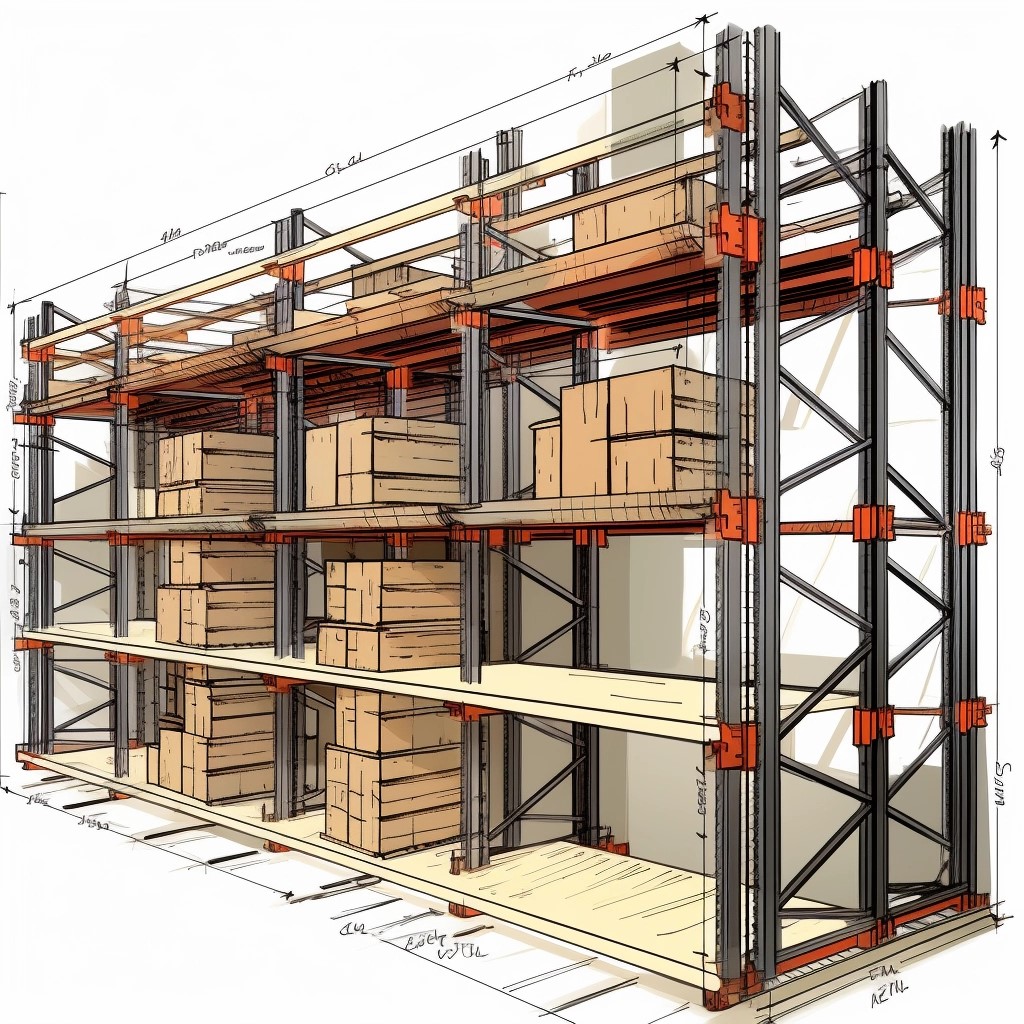
Appropriate design storage rack systems greatly affect the operability of your warehouse.
Poor storage rack and warehouse design can lead to reduced efficiency, increased risk of accidents, and potential financial losses.
With a poorly designed layout, your labor force could spend unnecessary time traveling to pick/load spots. With improperly designed racks, you could experience damage that shuts down operations, or even accidents and injuries.
This article serves as a comprehensive guide to designing storage racks that optimize space, ensure safety, and improve overall functionality.
Storage Rack Design
When it comes to designing storage racks, there are several key considerations to keep in mind.
Location
The location of the storage facility and the seismic activity in the area play a significant role in determining the design.
In higher seismic areas, it may be more cost-efficient to sharpen your pencil on the maximum loads that your rack system will experience.
While you may typically feel it’s good to overdesign by considering a heavy shelf weight, that could work against you significantly in higher seismic areas – causing increased reinforcement, custom base plates and anchors, beefier connections, and even construction to strengthen the concrete slab.
Type of Steel
Another consideration is the type of steel to use. There are two main types of storage racks: structural racks and roll-formed racks.
Structural racks typically have more capacity, while roll-formed racks are more versatile and cost-effective.
There are cases where either type could be a better choice. A structural rack may get you more capacity in a high seismic area but may be overkill and an inefficient design choice in other scenarios.
Rack Utilization
In the structural design of racks, the metric we use to determine if something passes or fails is called a “utilization ratio”. It can be looked at as what percent your rack is stressed – if it’s over 100%, then it is overstressed.
Utilization ratios can also be used to determine if a rack is underutilized. If the utilization ratio of your rack is 30%, then your system probably isn’t efficiently designed, and you could explore lightening your materials.
Other considerations include whether the racks are single row or back-to-back and if it’s a tunnel bay, allowing for easy access and navigation.
Common Storage Rack Types
There are different types of storage racks, each serving specific purposes.
Selective Rack
This is the most common type, allowing easy access to each pallet. It’s like picking books from a shelf in a library.
Push Back Rack
Push back racks are ideal for high-density storage, it allows multiple pallets to be stored on a single level, like a stack of trays in a cafeteria.
Flow Rack
Flow racks are designed for first-in, first-out inventory, it’s like a conveyor belt for pallets, ensuring older items are used first.
Drive-In Rack
Drive-in racks are great for high-density storage with few product types, it’s like packing up a storage unit – you can access items from the front only.
Regulatory Compliance & Safety
Designing storage racks isn’t just about maximizing space; it also involves complying with regulations and ensuring safety.
Several codes govern storage rack design, including IBC, ANSI MH16.1, ASCE, ACI, AISC, and AISI. These codes provide guidelines to ensure that storage racks meet the necessary safety standards.
While ANSI MH16.1 is the industry standard created to give us direction on how to design storage racks, the IBC is the governing code recognized by jurisdictions.
Designing in accordance with all codes and standards is important to ensure safety and to avoid delays in the permitting process.
Permitting is an essential part of a project, involving obtaining official approval for the rack design. A reviewer will determine if your project drawings and calculations meet the standards of the jurisdiction and if your project will be awarded a permit.
Regular inspections are necessary to ensure ongoing safety and compliance. The requirement for inspections can be very jurisdiction-dependent. So, make sure to clear it up with your contact at the city office.
Load placards, required to be placed on beams of the rack, display the maximum load a storage rack can handle, helping to prevent overloading and potential accidents.
Best Practices for Maximizing Space and Efficiency
To maximize space and efficiency, it’s crucial to choose the right type of steel type based on the specific use case and location. The decision between roll-formed and structural rack depends on the system’s requirements and budget.
Different rack types offer various benefits.
For instance, selective racks provide easy access but may not be the most space efficient. Push-back and flow racks, on the other hand, optimize space by allowing for higher density storage. Drive-in racks are perfect for warehouses with limited space, utilizing vertical space efficiently.
Designing an efficient storage rack system involves considering the location, seismic activity, safety factors, and regulatory compliance. Choosing the right type of rack and following best practices can help maximize space and efficiency, ensuring a well-organized and safe storage facility.
Want Engineer-Approved Storage Racks Within Minutes?
Gone are the days of waiting weeks to get your prelims approved.
Our new software OneRack does the job of a structural engineer—so that you can create winning rack prelims that get approved today.
Simply build your rack in the app, and play around with it until it’s engineer-approved. It saves you weeks of back-and-forth.
OneRack is completely free to try—you can get a 30-day free trial to the Pro version here.
Try OneRack’s Pro Version, Completely Free
Get a 30-day free trial and start creating approved rack prelims within minutes.
